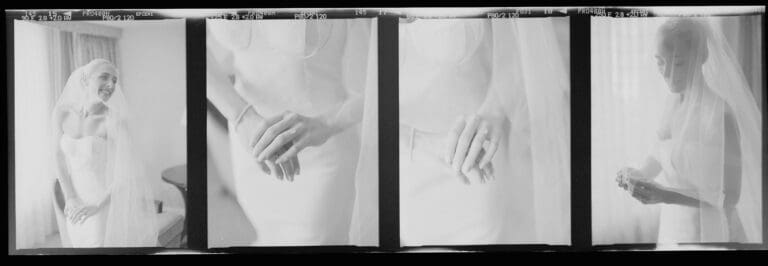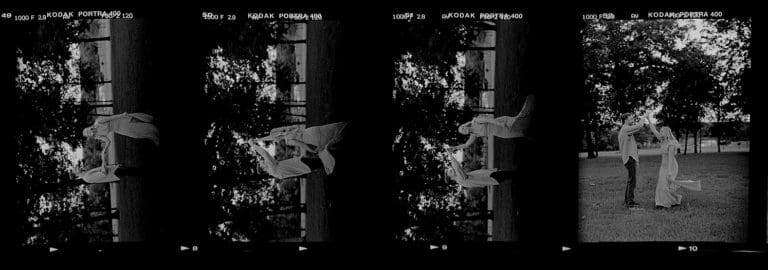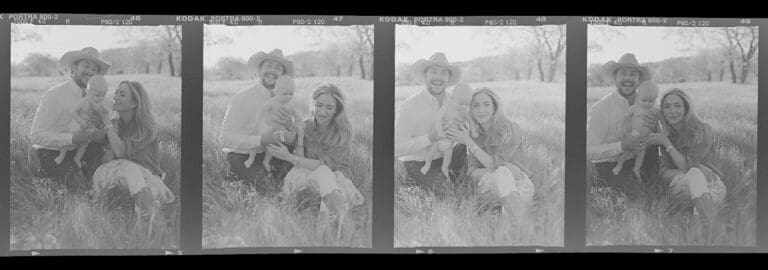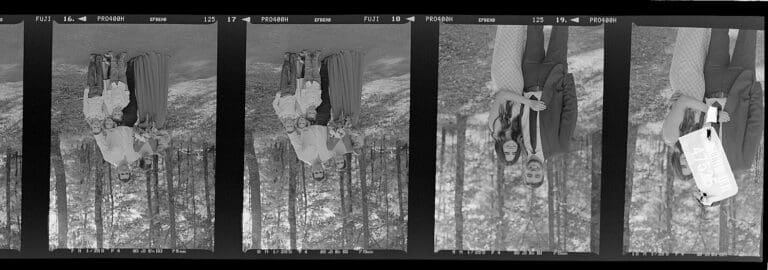Our Exposure Reference Sheets are the feedback you’ve been waiting for, right in your inbox. Ever had an order hit your inbox and something feels off? This is where exposure reference sheets come to the rescue! They clearly show your exposures for each and every frame. If there’s an issue, the exposure reference sheet will tell you! Did you know you can also use them to identify camera issues?
Here are some of the most common camera issues we see at PhotoVision—and how YOU can learn to identify them by using your Exposure Reference Sheets.
Light Leaks

When looking at this exposure reference sheet, what do you notice that seems out of place? Did you clock the white markings across the top and bottom of the film? These marks are due to a light leak in your camera. If you’re seeing light leaks, your camera likely needs to be serviced to see where and how the light is getting in.
Opened Camera Back

This one is an easy spot! If we’re all being honest, each of us have done this once or twice before immediately uttering, “shoot!” before slamming the back shut. The section of white seen here is overexposure caused by the back of your camera being opened mid-roll or even at the end of the roll.
Helpful Tip: Keep washi tape with you so you can write info about your film to stick on the back of whatever camera body you’re shooting. Just remember to take it off when you switch rolls so you know there’s nothing in there anymore!
Sticky Shutter

This one may take a little longer for a greenie to diagnosis. Take a close look down the right side of each frame in this exposure reference sheet, notice how dark it is? This is caused by a shutter sticking when it opens/closes. Sometimes this issue can fix itself if it’s sticking over something temporary (ie: humidity, cold, etc.) but if it continues, those dark blips are your camera’s way of telling you it’s time to be serviced.
Base Fog


Flat film equals base fog film. When identifying base fog, you want to pay attention to the density of the spacing in between each frame. When a roll is affected by base fog, you’ll notice this spacing becomes a light gray as opposed to a dark black when looking at your exposure reference sheet. You also want to note the contrast level within each frame—when a roll is base fogged, every frame will appear very flat with little contrast. This is definitely not the look you’re going for so this is a sign to get your camera checked out.
Film Wound Too Far When Loaded


Hit the brakes! See all that unexposed space before the first frame? That right there is a sure sign this roll of film was wound too far upon loading (e.g. for medium format, it was wound past the word “start”).
When your film is wound too far, your final frame will land at the physical end of the roll, which is a designated space for film processing + scanning. This space is used for clipping your film and for roll numbering. When a frame lands here, it can become distorted due to these processing needs.
Film Advance Issues

When evaluating the spacing in between each frame on a exposure reference sheet, you want them to be consistent. See how this roll has uneven spacing from frame to frame? This is a red flag that your camera has advancement issues. If the spacing is just slightly off, that is A-OK. But if the spacing begins to increase, your camera needs to be serviced.
Photos by Jacque Lynn Photography , Be Light Photography , Anna Peters , Kristen Kilpatrick , Courtney Leigh Photo.
